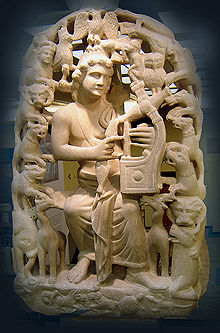Ballos
| Music of Greece | |
|---|---|
 |
|
| General topics | |
| Genres | |
| Specific forms | |
| Media and performance | |
| Music awards |
|
| Music charts | |
| Music festivals | |
| Music media |
|
| Nationalistic and patriotic songs | |
| National anthem | "Hymn to Liberty" |
| Regional music | |
| Related areas | Cyprus, Pontus, Constantinople, South Italy |
| Regional styles |
|
The Ballos Sirtos (Greek: Μπάλος) (from the Italian ballo via Latin "ballo" which derives from the Greek verb "βαλλίζω" ballizo, "to dance, to jump"), is one of the best known Greek folk island dances in Greece. There are also different versions in other Balkan countries. The Ballos is of Greek origin, with ancient Greek elements.
The melody of a ballos is generally joyous and lyrical which is typical of the music of the Aegean Islands. This couples' dance incorporates all the elements of courtship: attraction, flirtation, display of masculine prowess and feminine virtue, pursuit,and rejection followed by eventual capture and surrender.
Its origin is in the island culture of Greece. Men could not approach women easily, so they created this dance in order to "flirt" with them. There are various forms of the ballos around the islands. The simplest is one in which a single couple goes through a series of spontaneous figures. In another version many couples dance simultaneously as if alone on the dance floor. Yet another version is introduced by a Sirtos. In its most complicated form, a number of couples go through various figures, somewhat reminiscent of the European minuet. Ballos songs are popular and there are many of them. One of the most popular Ballos song from Asia Minor is: Τι σε μέλλει εσένανε; Ti se mellei esenane ("What do you mind?") etc.
...
Wikipedia
